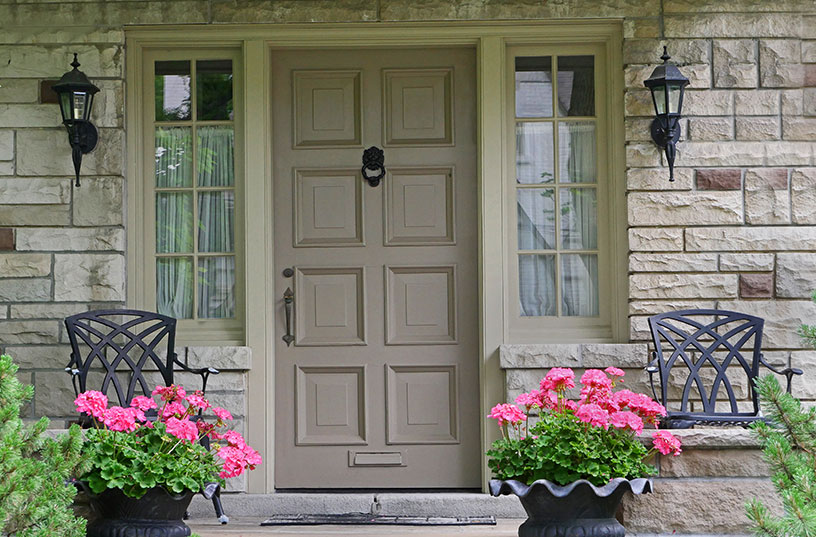Houses are home to more than people – they often contain a lifetime of memories. Which is why it can be so difficult to say goodbye. For many empty nesters, retirees, and seniors, moving to a smaller, more manageable residence is both appealing and challenging. However, downsizing or “right sizing” can provide numerous benefits, including:
- Freedom – from yard work, cleaning large spaces, and maintenance/upkeep.
- Increased safety – by eliminating stairs and other potential hazards.
- Cost savings – due to lower mortgage payments (or eliminating a mortgage), decreased maintenance costs, lower utility bills, and decreased taxes and insurance.
If you’ve been thinking about selling your home and finding a residence that fits your new phase in life, we’ve got a few helpful strategies.
1. Decide the time that’s right for you.
Often the first hurdle to overcome is deciding when it’s the right time to make a change. According to research by Retirement Move, over half of respondents over 60 have admitted that they struggle to maintain their properties, and a third say they can’t keep up with maintaining their yard/gardens. The study found the perfect age to downsize was 64. However, the right time to downsize is very personal. Factors such as health (physical restrictions), career/work status, social connections, and financial situation should all be taken into consideration.
In addition to maintenance, cost is a major factor in the decision to downsize. For many folks, retiring means you have less income, so reducing costs can also reduce stress and help you live more comfortably. Downsizing can free up funds for other things such as travel or hobbies.
Signs that’s it’s time to downsize include:
- Age or physical restrictions are making it difficult to maintain your home and yard/land.
- You have a lot of unused space in your house, which means you’re paying more for your utility bills than you need to.
- The costs of maintenance and upkeep are becoming a burden.
- You’d like to be closer to grown children and grandchildren.
- You would enjoy more amenities, such as a pool, fitness center, and social activities, which are often available in retirement communities.
2. Start decluttering before you move.
Once you’ve made the decision to downsize, it’s time to do some “prep work,” which includes eliminating clutter and things you will no longer need. Because you’ll have less space, you’ll need to make decisions about what you want to take with you and what you’ll donate, sell, or throw out. This can be a difficult process because we all form attachments to things. The thought of going through years of accumulated items can be overwhelming, which is why it’s best to start before you decide to move. Don’t try to tackle this task all at once! Remember, the less stuff you have around the house, the fewer things you must pack and worry about when moving day arrives.
Start by taking an inventory of what you have. Go through each room and list items from biggest to smallest. Highlight items that are most important to you. You can make notes by each item as to whether you want to keep it, donate it, or trash it (see “sorting system”).
To begin the decluttering process, start by eliminating duplicate items, such as extra dishes, baskets and bins, blankets, pillows, or anything else you have multiples of. Be brutally honest about items you no longer use or need but have kept for sentimental reasons or “just in case.”
It’s helpful to use the “four pile sorting system” when decluttering. Set up boxes or bags with labels for:
- Giveaways – Possessions that will go to friends or family who can use them and want Ask first.
- Donations – Items that are still usable that can be donated to those in need. Many donation centers provide pick up options.
- Sale items – If you have furniture or other big-ticket items that won’t work in your new space, but still have value, you can try selling them online or in a yard sale.
- Trash – Some things have come to the end of their useful life – like it or not. These items need to be taken to the curb or scheduled for trash pickup.
Everything that remains after sorting should have a purpose or place in your new home.
If you’re feeling overwhelmed begin with small spaces, such as hall closets, linen closets, bathroom cabinets, junk drawers, spare bedrooms, outdoor sheds, and other out-of-the-way spots. Areas like these can often be tackled in an afternoon or a day, so it helps you feel like you’re making steady progress.
3. Start your home search
Once you’ve finished decluttering and deciding what you want to keep, you can start looking for your new home. Again, making a list is very helpful. List the amenities that you absolutely can’t live without, along with other things that would “be nice to have.” Remember, the purpose of downsizing is to make life easier and more affordable, but also enjoyable. So, if you love gardening but you can’t keep up with the yard you currently have, consider a place with a small yard or raised flower beds that allow you to continue to enjoy your hobby on a smaller scale. Many retirement communities also have shared garden spaces for residents.
Consider your lifestyle and plans for retirement. Do you want to be able to shut the door and go on vacation without worry? Then perhaps a condo where all maintenance is taken care of is the right choice. Do you want to meet new people and participate in social activities? Then consider an active retirement community.
It’s also wise to consult with a real estate professional for both the sale of your existing home and the search for a new residence. They can provide advice to make your move easier. They’re also knowledgeable about what type of residences are available in your preferred location and price range. Many agents focus on downsizing. For instance, Cornerstone Real Estate specializes in helping people sell large parcels of land, such as farms. This can be particularly difficult for folks because farms are often passed down through the generations. However, when there is no one willing or able to take over, a sale is often the best option. Having the advice and experience of a professional in situations like this is invaluable.
4. Look at the big picture
When you find your new home, condominium, or apartment, you can begin to think about the “big picture.” Take measurements to determine what furniture will fit in the rooms, and how much closet and storage space is available. Photographing rooms will also help you decide where to place items. If you’re buying furniture for your new home, consider pieces that serve a dual purpose, such as a storage bench for the entryway, an ottoman that can be used as a coffee table as well as a bin to stash belongings, or a bed with built-in drawers. Creative storage solutions for closets and drawers can also help you maximize small spaces. Organization is the key to making your new home comfortable instead of cramped.
Here are some other questions to consider:
- Does your new residence have a washer and dryer or hookups?
- Does your new home have a working refrigerator?
- Is it worth it to you to move heavy appliances (or pay movers to do so), such as a refrigerator, freezer, stove, or oven?
- Do you have large sentimental items you’ve inherited such as a dining set or antique sideboard that will not fit in your new space? If so, start by asking family members if they want them. If not, you can try selling them online.
- Does the new residence have garage space? Is it a one or two-car garage? Would you consider downsizing to one shared family vehicle?
- Do you need (and can you afford) a storage unit for items that you are unwilling to part with?
5. Get some help
Downsizing your home can be a huge task, so don’t hesitate to ask for some help. In addition to the assistance of a real estate agent, you might enlist your family and friends to pitch in. They can help you sort items or make decisions about what to keep. Someone could also take donated goods to charities or help you list items for sale online. Make a list of tasks and decide which ones could be delegated.
You might also consider hiring movers that specialize in downsizing. Many companies offer help with home decluttering, estate sales, and packing and moving seniors. Some companies, such as Caring Transitions, will even assist with organizing your new home! A good place to start is the National Association of Senior Move Managers (NASMM).
Starting a new chapter in your life can be difficult, but it can also be exciting and enjoyable. It offers a fresh start, and often reduces a lot of stress. It’s helpful to focus on the positives, such as cost savings and fewer responsibilities – resulting in more free time to do what you enjoy. Starting with a strategy and getting help from professionals can make this transition as smooth as possible.










